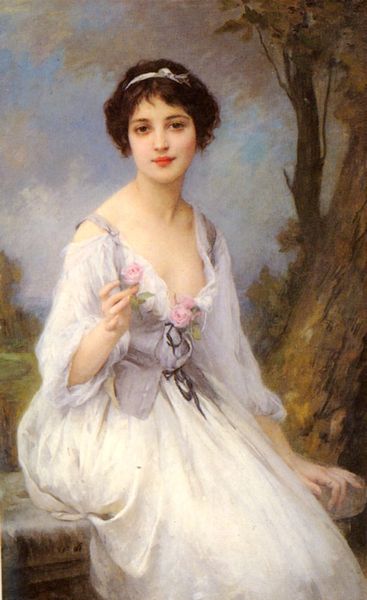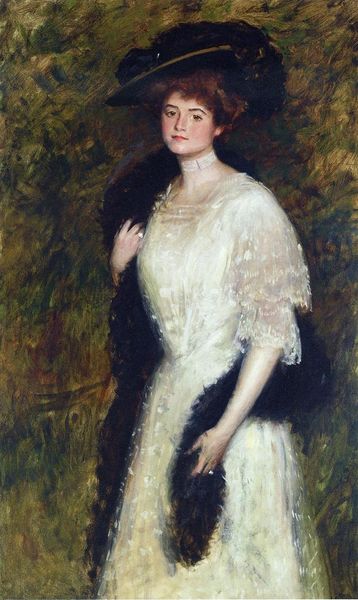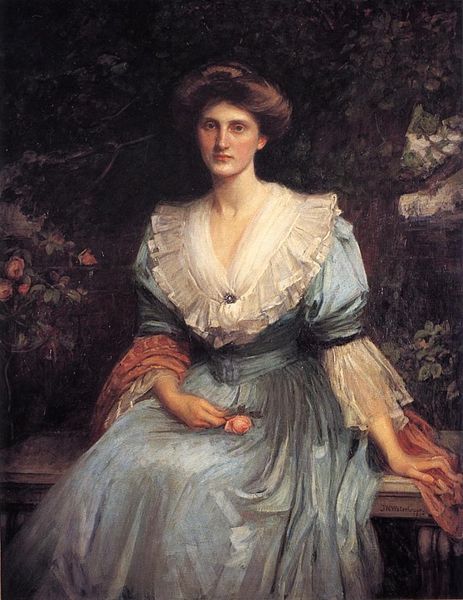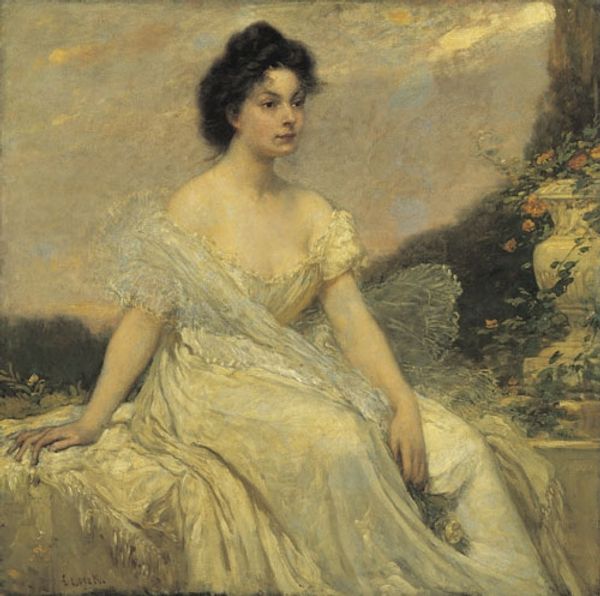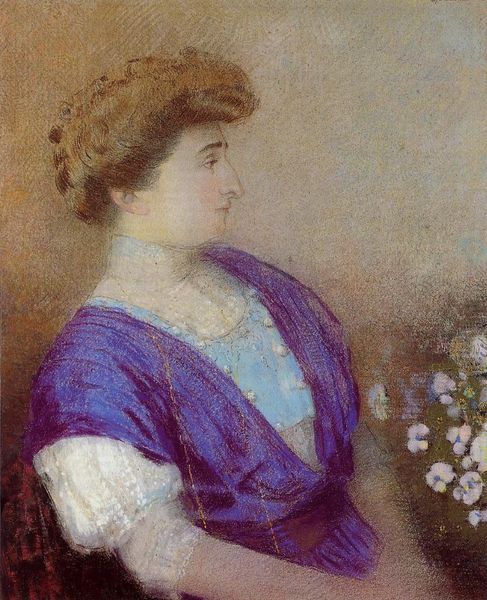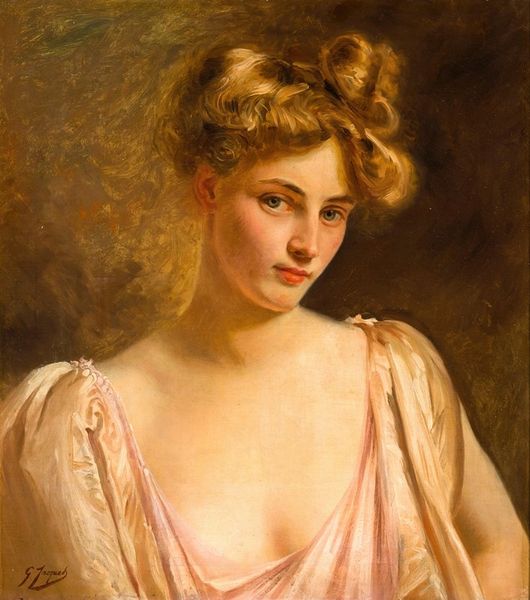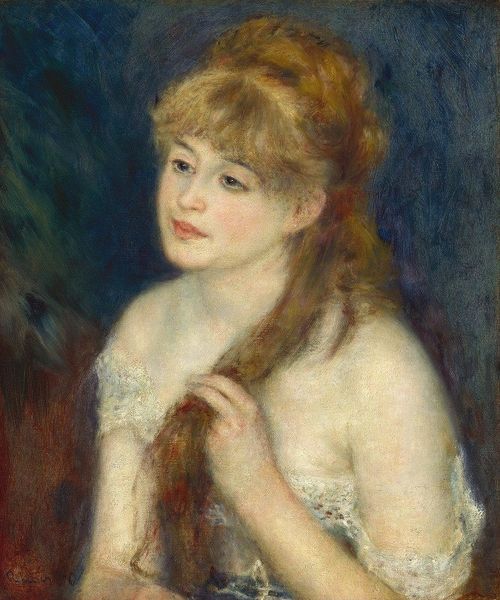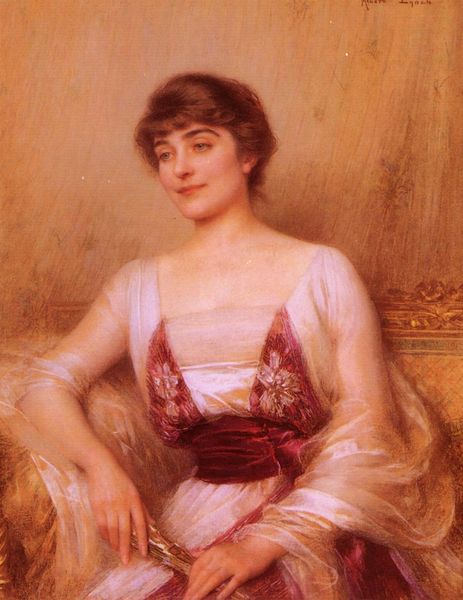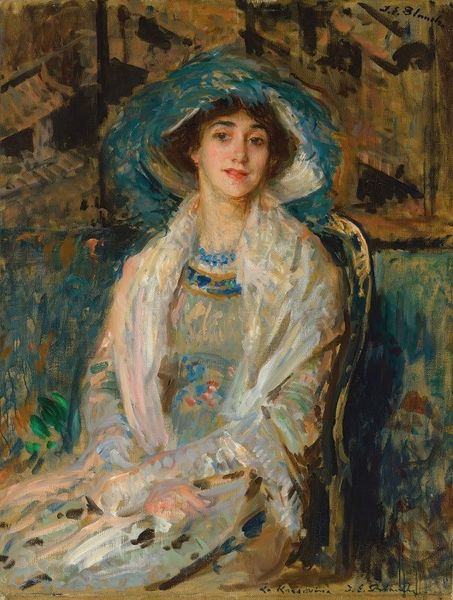
Copyright: Public domain
Curator: Looking at this portrait, I immediately notice the delicate interplay of blues and golds, creating a luminous, almost dreamlike quality. Editor: We are looking at "Madame Gaston Bernheim de Villers née Suzanne Adler" painted by Pierre-Auguste Renoir in 1901. It’s an oil on canvas, currently residing at the Musée d'Orsay. I’m interested in this choice of setting. Placing the sitter outdoors really reflects a certain social mobility during this period. Curator: Precisely. Renoir was often commissioned by the rising bourgeoisie, seeking to solidify their status through art. He captures Madame Bernheim de Villers within the trappings of leisurely refinement that’s both revealing and staged. Editor: Yes, look at how her dress seems carefully crafted to suggest both effortless grace and expensive fabric. The very weave seems to imply a certain status and industry that makes all this apparent ‘leisure’ possible. This idea of accessible refinement is interesting. Curator: Indeed. Also the way that her complexion seems illuminated; it presents this woman in ideal conditions, bathed in light, at ease. But how much is nature and how much is meticulous labour? It’s a key part of what Renoir does. Editor: I can see your point about light, but even without the shimmering gold of the chair she is sitting on, or even the detail of her golden wedding ring, there is this kind of languid quality. There's something substantial and material. Do you think it reflects anxieties related to labour and materiality? Curator: Maybe... The setting, the clothing, everything contributes to this carefully constructed image of feminine grace. We see what we are meant to see; a wealthy woman captured in a moment of serene beauty that disguises anxieties concerning production with class. Editor: Exactly. As someone concerned with history, that's the part I love most: the way that this image works, almost inadvertently, as a signifier of economic relationships and the labor needed to support this one vision. Curator: So, in essence, while Renoir seemingly painted a portrait, he unknowingly revealed a wider snapshot of the socioeconomic conditions shaping turn-of-the-century France. Editor: Absolutely, it’s not just the portrait of a woman, but a portrait of an era defined by shifting class dynamics and its means.
Comments
No comments
Be the first to comment and join the conversation on the ultimate creative platform.

